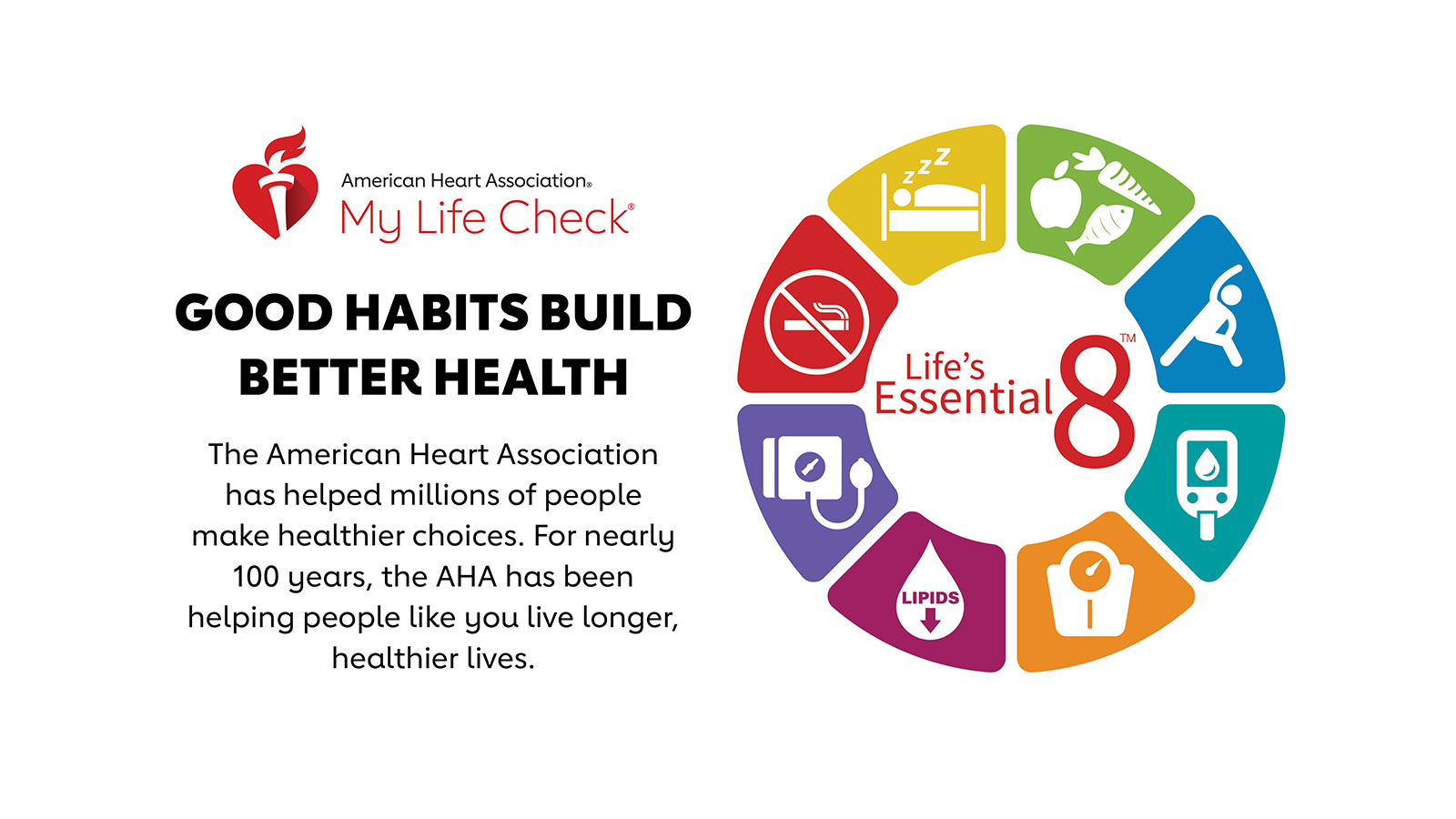Since 1924, the American Heart Association has been fighting heart disease and stroke and helping people to live longer, healthier lives. Our local AHA shares ways that you can stay healthy, get involved and help raise awareness right here in NEPA.
AHA Recommends 7-9 Hours of Sleep for Adults
The American Heart Association’s checklist to measure cardiovascular health has been updated to include healthy sleep as essential for optimal cardiovascular health. The new sleep metric suggests seven to nine hours of sleep daily for adults and more for children depending on age.
Other health and lifestyle factors in the checklist are nicotine exposure, physical activity, diet, weight, blood glucose, cholesterol and blood pressure. These factors were part of the previous seven-item scoring tool known as Life’s Simple 7™.
Cardiovascular disease is the number one cause of death in the US and globally. According to the American Heart Association’s 2022 Heart Disease and Stroke Statistics Update, approximately 121.5 million people in the US have high blood pressure, 100 million have obesity, more than 28 million people have Type 2 diabetes and only 1 in 4 adults reported achieving the physical activity and exercise recommended. Various research studies over the past two decades indicate more than 80% of all cardiovascular events may be prevented by healthy lifestyle and management of known cardiovascular risk factors.
The updated checklist scoring can now be used for people ages two and older, and four components are measured in new ways. Life’s Essential 8™ includes:
1. Diet (updated)
A new guide assesses diet quality for adults and children at the individual level (for individual health care and dietary counseling) and at the population level (for research and public health purposes).
- At the population level, dietary assessment is based on daily intake of elements in the Dietary Approaches to Stop Hypertension (DASH) eating pattern. The DASH-style diet score has eight components: high intake of fruits, vegetables, nuts and legumes, whole grains and low-fat dairy and low intake of sodium, red and processed meats and sweetened drinks.
- For individuals, the Mediterranean Eating Pattern for Americans (MEPA) is used to assess and monitor cardiovascular health. The MEPA is a DASH-style eating pattern that can be measured with 16 yes or no questions about the weekly frequency of eating olive oil, vegetables, berries, meat, fish, dairy, grains and more.
2. Physical activity (no changes)
Activity is measured by the total number of minutes of moderate or vigorous physical activity per week. The optimal level is 150 minutes of moderate physical activity or more per week or 75 minutes per week of vigorous-intensity physical activity for adults. The optimal level is 420 minutes or more per week for children ages 6 and older with age-specific modifications for younger children.
3. Nicotine exposure (updated)
Use of inhaled nicotine-delivery systems, which includes e-cigarettes or vaping devices, is added since the previous metric only monitored traditional, combustible cigarettes. This reflects use by adults and youth and their implications on long-term health. Life’s Essential 8™ also includes second-hand smoke exposure for children and adults.
4. Sleep duration (new)
Sleep duration is associated with cardiovascular health. Measured by average hours of sleep per night, the ideal level is 7-9 hours daily for adults. Ideal daily sleep ranges for children are 10-16 hours per 24 hours for ages 5 and younger; 9-12 hours for ages 6-12 years and 8-10 hours for ages 13-18 years.
5. Body mass index (no changes)
The writing group acknowledges that body mass index (BMI) is an imperfect metric, yet it is easily calculated and widely available. Therefore, BMI continues as a reasonable gauge to assess weight categories that may lead to health problems. BMI of 18.5–24.9 is associated with the highest levels of cardiovascular health. The writing group notes that BMI ranges and the subsequent health risks associated with them may differ among people from diverse racial or ethnic backgrounds or ancestry. This aligns with the World Health Organization’s recommendations to adjust BMI ranges for people of Asian or Pacific Islander ancestry because recent evidence indicates their risk of conditions such as CVD or Type 2 diabetes is higher at a lower BMI.
6. Blood lipids (updated)
The metric for blood lipids (cholesterol and triglycerides) is updated to use non-HDL cholesterol as the preferred number to monitor, rather than total cholesterol. HDL is the “good” cholesterol. Other forms of cholesterol, when high, are linked to CVD risk. This shift is made because non-HDL cholesterol can be measured without fasting beforehand (thereby increasing its availability at any time of day and implementation at more appointments) and reliably calculated among all people.
7. Blood glucose (updated)
This metric is expanded to include the option of hemoglobin A1c readings or blood glucose levels for people with or without Type 1 or Type 2 diabetes or prediabetes. Hemoglobin A1c can better reflect long-term glycemic control.
8. Blood pressure (no changes)
Blood pressure criteria remain unchanged from the Association’s 2017 guidelines that established levels less than 120/80 mm Hg as optimal. Hypertension is defined as 130-139 mm Hg systolic pressure (the top number in a reading) or 80-89 mm Hg diastolic pressure (bottom number).
Life’s Essential 8™ is assessed by the My Life Check online tool. The updated scoring system can give users a score of up to 100 points based on an average of scores for each health and lifestyle factor. Learn more here.


























